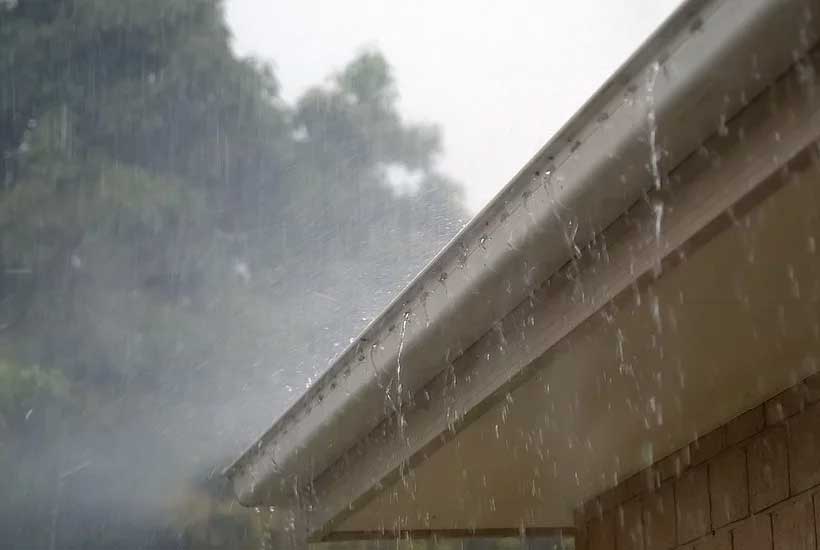Have you ever had an overflowing rain gutter ruin the landscaping beneath it? Over the long term, water from overflowing gutters can damage your home’s foundation too. So, it essential to figure out why your gutters aren’t doing their job. Here are the six causes of overflowing rain gutters and what you should do about them.
1. Clogged Gutters
Gutters can overflow if a clog is stopping them from draining properly. Your rain gutters might have developed a clog from fallen leaves, pine needles, animal nests, and other outdoor debris. It’s essential to clean out your gutters at least once a year to avoid this problem.
2. Improperly Angled Gutters
Your home’s gutters might look perfectly level, but they are meant to be slightly angled towards the downspout. The angle helps water drain quickly and prevents standing water, which can wear down your gutters. However, if your gutters were installed flat or angled away from the downspouts, they may overflow. You’ll need a roofing professional to reinstall your gutters at the proper angle.
3. Not Enough Downspouts
If a gutter system doesn’t have enough downspouts, it may not be able to drain water fast enough during heavy rain. If so, the water has no place to go but over the gutters and onto your landscaping.
In most areas, a typical home will need one downspout every 20 feet of gutters. You may need more gutters if you live in an area that sees many inches of rainfall at once. Even in a place where it rains every day, if it only rains a few inches at a time, one downspout every 20 feet should be fine.
4. Ice Dams
Ice dams are ice build-up in your gutters and on the edge of your roof. While they commonly affect gutters, gutters do not cause ice dams. Instead, a lack of attic ventilation is the most common cause. Still, if your gutters develop an ice dam, they may be unable to drain meltwater from the snow on your roof. The result could be water overflowing your gutters, or the water may make the ice dam worse.
Your roofer can temporarily melt the ice dam, but they should also get the underlying ventilation issue causing the roof dam fixed as soon as possible to prevent another ice dam.
5. Bent Rain Gutters
Bends in rain gutters can prevent them from draining properly and may cause an overflow. For example, a rain gutter with a downward bend can redirect water away from the gutter, where it has no choice but to overflow. If you have bent gutters, they need to be replaced.
6. Small Gutters
The last cause of overflowing rain gutters is size. Small gutters may not be able to capture all of the rain that large roofs produce, especially if you happen to live in an area that has high-volume rainfall. If your gutters are too small, your roof can replace them with K-style gutters. These have flat bottoms that can carry more water at once.
Whatever is causing your rain gutters to overflow, it’s important to talk to a local roofer or gutter specialist about the problem as soon as possible. Water near your home’s foundation can create serious issues quickly, so don’t delay.

